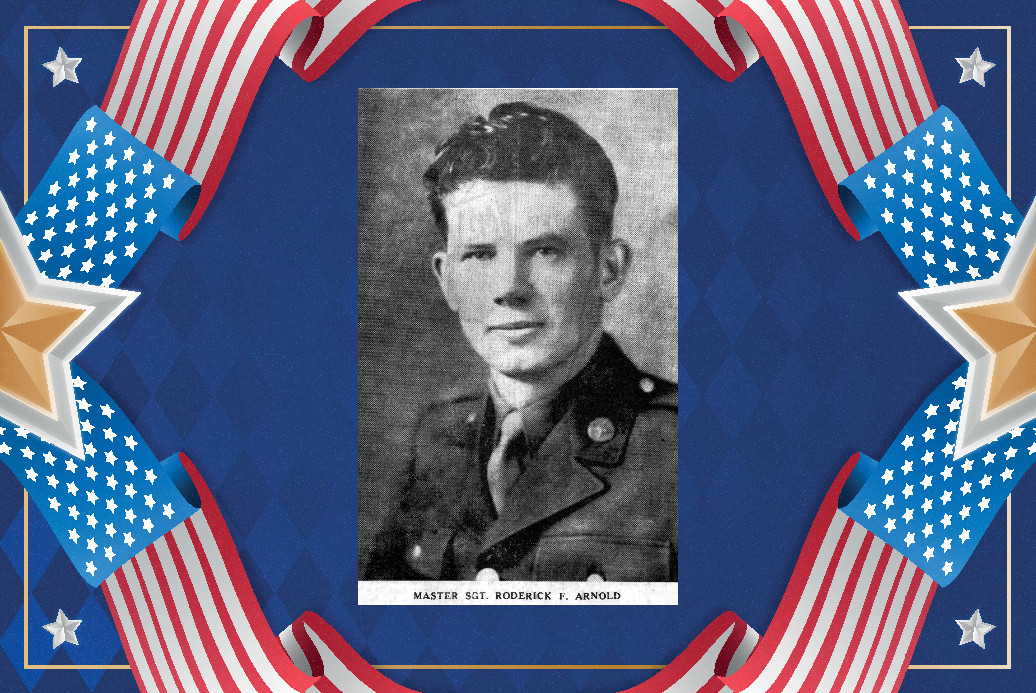By Deborah Larsen

Roderick Franklin “Rod” Arnold
Roderick Franklin “Rod” Arnold was born in Detroit, Michigan, on October 3, 1917, the son of Vern and Christine Cameron Arnold. Rod grew up in Rochester and attended Rochester High School. Having a keen interest in aviation, he took flying lessons at Detroit City Airport and then attended the American School of Aircraft Instruments in Glendale, California. After completing technical school, he worked for Pan American Airlines.
Rod enlisted in the Army in June 1942 and was assigned to the Air Corps, where his skills in airplane maintenance and his love of flying could be best used. He was trained as a flight engineer on the B-29 Superfortress heavy bomber in 1944, and was assigned to the top-secret 509th Composite Group.
In August 1945, Rod Arnold was a participant in one of the most consequential events in world history. The United States carried out nuclear bombing strikes against the Japanese cities of Hiroshima and Nagasaki in an attempt to force the surrender of Japan and avoid a bloody invasion of the home islands that was projected to cost millions of lives on both sides.
During the strike on Nagasaki on August 9, 1945, Rod served as the flight engineer aboard the B-29 known as The Great Artiste. Rod’s aircraft followed directly behind the strike aircraft, Bockscar, and carried the scientific instrumentation and observation equipment.
After the war, Rod returned to Rochester, married, and started a family while managing the used car lot for Larry Jerome Ford. He later moved to Croswell, Michigan, where he and his brother Max, also an Army Air Forces veteran, ran Arnold Airport for more than 30 years.
Roderick Franklin Arnold died at the age of 81 on October 25, 1998, and was laid to rest in Croswell, Michigan.
